A few things to know before stealing my 914
Dear Thief,
Welcome to my Porsche 914. I imagine that at this point (having found the door unlocked) your intention is to steal my car. Don’t be encouraged by this; the tumblers sheared off in 1978. I would have locked it up if I could, so don’t think you’re too clever or that I’m too lazy. However, now that you’re in the car, there are a few things you’re going to need to know. First, the battery is disconnected, so slide-hammering my ignition switch is not your first step. I leave the battery disconnected, not to foil hoodlums such as yourself, but because there is a mysterious current drain from the 40-year-old German wiring harness that I can’t locate and/or fix. So, connect the battery first. Good luck finding the engine cover release. Or the engine, for that matter.
Now, you can skip your slide hammer. The ignition switch’s tumblers are so worn that any flat-bladed screwdriver or pair of scissors will do. Don’t tell anyone.
Once you’ve figured that out and try to start the car, you’ll run into some trouble. The car is most likely in reverse gear, given that the parking brake cable froze up sometime during the Carter administration. Since there is not a clutch safety switch on the starting circuit, make sure to press the clutch down before you try to crank the engine. (I don’t want you running into my other car in the driveway.) This is doubly necessary because my starter is too weak to crank the clutch-transmission input shaft assembly with any success.
With the clutch pedal depressed, the engine should turn over fast enough to get things going. But first, you’ll need to press the gas pedal to the floor exactly four times. Not three. Not five. Four. The dual Webers don’t have chokes and you’ll be squirting fuel down the barrels with the accelerator pumps for the necessary priming regime. If you don’t do it right, the car won’t start before the battery gives up the ghost. Consider yourself forewarned.
Marketplace
Buy and sell classics with confidence

If you’ve followed along so far, the engine should fire right up. Don’t be fooled—it will die in eight seconds when the priming fuel runs out. Repeat the gas pedal priming procedure, but only pump two times. Deviate from this routine at your own peril.
Now you have the engine running. Make sure the green oil light in the dash goes out. If it does not, you only have about 100 yards to drive before the engine locks up, so be attentive. If all goes well with the oil pressure, you may now attend to the gear shift lever. Some explanation follows.
This is a Porsche 914. It has a mid-engine layout. The transmission is in the far back of the car, and the shift linkage’s main component is a football-field-long steel rod formed loosely in the shape of your lower intestine. Manipulating the gear shift lever will deliver vague suggestions to this rod, which, in turn, will tickle small parts deep within the dark bowels of the transaxle case. It is akin to hitting a bag of gears with a stick, hopefully finding one that works.

If you are successful in finding first gear (there is a shift pattern printed on the knob; they say German engineers don’t have a sense of humor), congratulations. You may launch the vehicle into motion.
Do not become emboldened by your progress, as you will quickly need to shift to another gear. Ouija boards are more communicative than the shift knob you will be trusting to aid your efforts. Depress the clutch as you would in any car, and pull the knob from its secure location out of first gear. Now you will become adrift in the zone known to early Porsche owners as “Neverland” and your quest will be to find second gear. Prepare yourself for a ten-second-or-so adventure. Do not go straight forward with the shift knob, as you will only find Reverse waiting there to mock you with a shriek of high-speed gear teeth machining themselves into round cylinders. Should you hear this noise, retreat immediately to the only easy spot to find in this transmission: neutral. This is a safe place, no real damage can occur here, but alas, no forward motion will happen either. From this harbor of peace, you can re-attempt to find second, but you may just want to go for any “port in a storm”, given that the traffic behind you is now cheering you on in your quest with vigorous horn-honks of support and encouragement. Most 914 owners at this point pull over to the side of the road and feign answering a cell phone call to a) avoid further humiliation; b) allow traffic to pass; and c) gather the courage for another first gear start. You may choose to do likewise.

If you press onward without taking a break, you may re-enter first. This is how the car mocks you for your lack of skill, but sometimes it is the only path forward. Once you are ready to again try for second, I can offer some advice. One trick that works is to declutch the transmission, pull the lever from the first-gear position, enter into the aforementioned neutral zone, and then rapidly wig-wag the shift knob side-to-side along a lateral axis. If you move the knob quickly enough, the transmission will be out-smarted and cannot anticipate your next move. It is at this time that you should re-attempt to enter second, and most likely you will do so. Surprise is your best weapon against this transmission.
The move to third should be straightforward, as it’s the only easily-accessible gear in the set. You should now be out of my neighborhood and on the main four-lane road. Third gear will be good for 45 mph, so I would advise you just staying there. Trying to get to fourth gear will only frustrate you and your nearby drivers (see: first-to-second shift).
You don’t need to check for gasoline in the car. It will be full, even though the fuel gauge reads zero. The odometer reads “0”, not because it was reset when I filled the tank, but because it is just broken. Ignore it. If it is night, and it most likely will be, you will need to turn on the lights. I’ll leave it to you to find the switch since I’ve helped a lot so far. Suffice to say that once you get them active, you will find that the seven inch sealed beams from 1971 will only illuminate sufficient roadway for travel below 45 mph. Since you are still in third , this shouldn’t be a problem. Oh, and the lights only work on high beam, so ignore the flashing lights and vulgar gestures from opposing traffic.

By now you’ve certainly noticed the smell. That is the aroma of Mobil 1 oil being boiled off of long sections of horizontal exhaust pipes, which were cleverly encased by the factory with a second shroud of oil-holding chambers. They filled with oil during my last drive and you are now operating a small thermal refinery that is making light short-chained vaporous hydrocarbons from what was once $8-a-quart oil. They are being conveniently routed to the cabin through carefully formed channels in the heating system, plus the rust holes in the floor provided by Mother Nature herself over the past few decades.
You’ll feel less dizzy if you open a window. But mind that driver’s window does not work, so you’ll have to lean over and roll down the passenger window half-way. I say half-way in a manner that will become apparent once you try to get the window to go all the way down, which it will refuse to do. Instead, simply open the driver’s door slightly and drive along, as I do. Once the oil vapors are exhumed from the cabin, you should start to feel a little better. There is a rag behind the driver’s seat that you can use to wipe the oil film off of the inside of the windshield.
Knowing which road you’re probably on by now, you will be hitting stop lights. Try as hard as you can to not bring the 914 to a stop. The brake system is ideal for this situation, being known more as “scrubbers” than “brakes”. Since you can’t effectively stop the car, use this to your advantage and don’t try. Remember: You certainly don’t want to have to go back into first.
If you have made it within sight of to the highway entrance, don’t get any ideas. The front right wheel is severely bent and the vibration at velocities above 50 mph will crack the windshield and cause the doors to open by themselves. So stay on the surface streets, stoplights notwithstanding.
It may be at this point that you consider abandoning the car to avoid further calamity. There is an Exxon station right before the freeway entrance. The last guy who stole my 914 used this very spot and it was rather convenient for all concerned parties. I suggest you ditch the car there and scope out a nice, reliable Camry to heist.
Norman Garrett was the Concept Engineer for the original Miata back in his days at Mazda’s Southern California Design Studio. He currently teaches automotive engineering classes at UNC-C’s Motorsports Engineering Department in Charlotte, North Carolina and curates his small collection of dysfunctional automobiles and motorcycles.

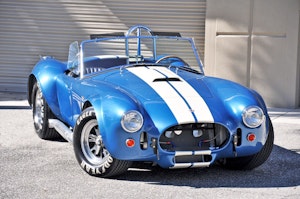

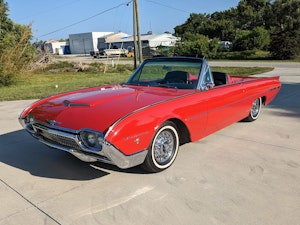
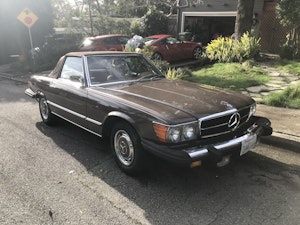
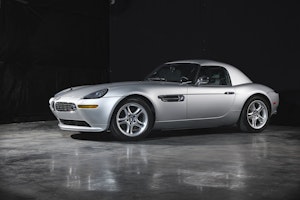
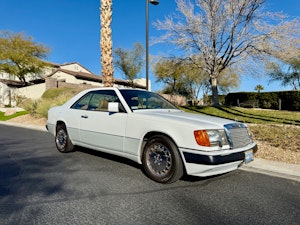
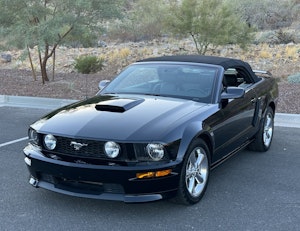
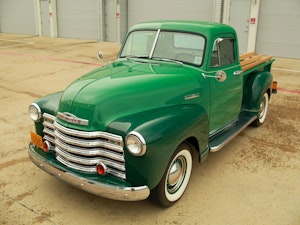











Laughed my ass off the whole time I read this! What a great explanation of the 914! One of the best reads I’ve had!
This is a great article that I thoroughly enjoyed! We’ve all had a car (or more) that had ‘quirks’ that precluded the need for an alarm system. This story really brings home the love we have for cars in spite of the generous amounts of luck and unusual procedures required to get them on the road. My favorite line was, “Surprise is your best weapon against this transmission”. Great story!!
HA! I’m a retired VW/Porsche/Weird Euro-Car mechanic and collector. You want some real fun? Try restoring a Citroën DS21! In my youth, I had VW’s, my brother had the 914’s, but I got stuck working on everything. I decided years ago that pushing an aircooled car out of a snow bank after having been gassed and frozen nearly to death was no longer my thing (I used to drive a VW Thing, too). Nowadays I keep a 1989 Wrangler going because the heat is strong and it goes about anywhere I aim it. I halfway wish you were closer, I’d give you a hand with the electrical system and shifter. I’ve restored the electrical systems of many a faulty VW, MG and Land Rover back to functional, among others. I used to dream about tracers and dirty grounds… If I were you, I’d hope the guy punches the ignition, it would be a great excuse to replace it then re-key your lock cylinders to match. Once the steering wheel is off, the ignition tumbler is pretty easy to replace. If you have a couple screw drivers and a fine flat file, the door locks are also very easy to make match as long as you have a the key that fits in them. Attention to detail counts!! In the mean time, the car itself remains a theft deterrent device – put old, flat tires on it, park it in your driveway and it’ll deter thieves from entering your house, too.
Is this car British? The last time I had to deal with this many work arounds the car was a TR6. We have had fuel injection for so long we forget the adventure of starting carburetor equipped cars in the cold. Some you pumped the pedel, some you pressed and held the pedal, and some you dared not touch at all. With all of them you kept your fingers crossed.
I love 914s! I’ve had at least seven! Last had a Corvette engine in the middle with 911 suspension. My first was ‘74 1.8 drove in LA traffic 112 miles a day. 40 mpg, disc brakes, excellent storage and fiberglass targa tops were better than 911 Targas! Fun cars to drive… like street legal go carts! Enjoyed the article.
Oh.my.god. As an afficianado of older Deutsch autos, the comment about “German engineers have no sense of humor” almost made me spit tea across my computer…bravo! I love it. Beautiful 914, btw. A thing of beauty to be respected by the strong, and feared by the weak. Cheers!
That is too funny!
I missed all of the “fun” of owning a 914 by restoring a 1967 Camaro that I drove for years. I desperately wanted a 914 but vicariously experienced 914 ownership through a workmate that was brave enough to own one. Like 90% of the 914 owners, he got smart and dumped the car on some other unsuspecting buyer eager for the 914 experience. I mention the Camaro because it was 100% reliable and started every time, hot or cold. My dad warned me about those “foreign jobs” as he put it. Wisdom through experience.
I had an ’80s Honda CRX that sounds a little like his 914. Until the engine warmed up, letting the car come to complete stop was a mistake. It took Riverdance-style footwork to keep the clutch depressed, the brake on, and the engine revving at stop signs.
Love this.
Hook a test light in series on the ground side of the battery and pull fuses til the light goes out. Your current draw is in that circuit.
Best post i have read in years. Still laughing
This was great made my night. As a Vw guy myself I know those quirks.
I drove Porsche ” cousins ” forever ( 5 siblings from beetles to vans) and thoroughly enjoyed your well designed and accurate humour! Thank you.
I currently drive a boring car but it gets the job done. But I still fondly glance at the old Fraulines I used to dance with.
Hilarious